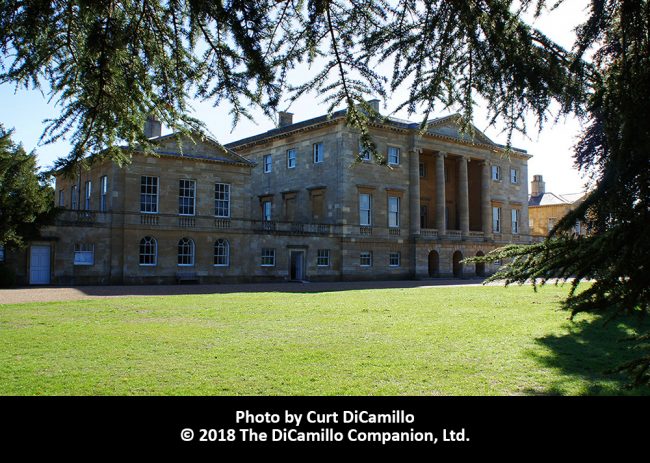
The entrance (west) facade today
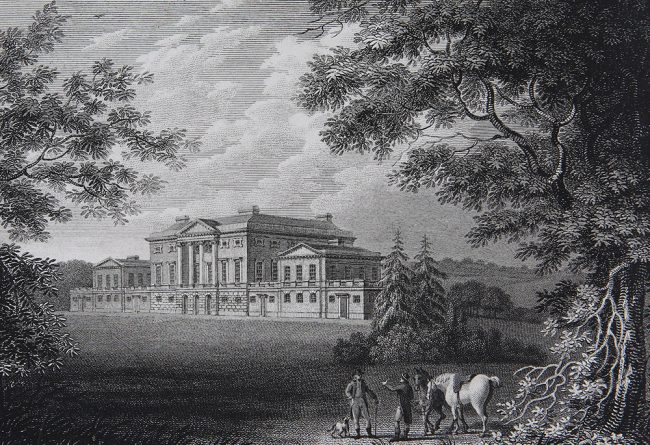
A 1799 engraving of the house from "Angus's Views of Seats." By kind permission of a private collection.
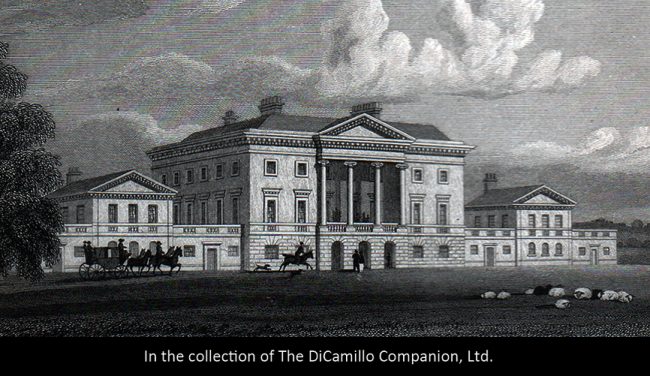
An early 19th century engraving of the entrance (west) facade from "Neale's Views of Seats"
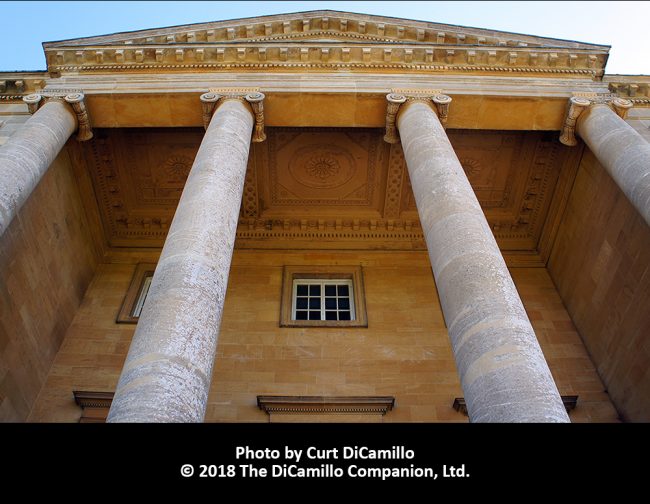
The entrance (west) facade portico
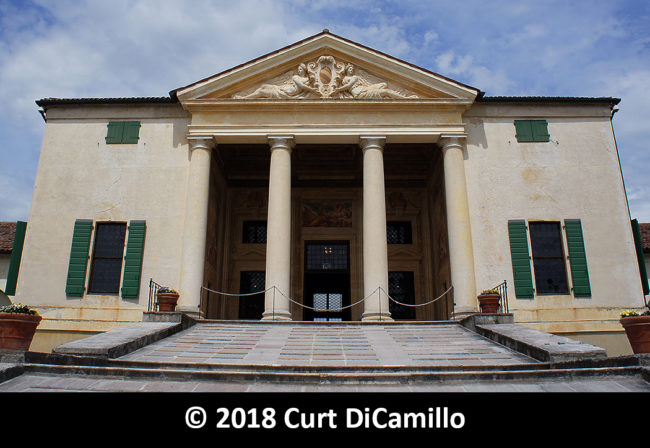
Villa Emo, Italy, upon which the west facade of Basildon may have been modeled.
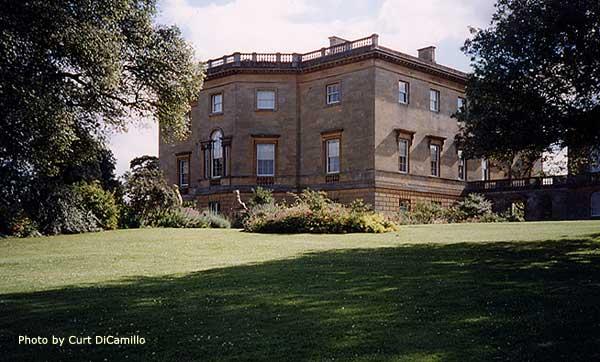
The east (garden) facade
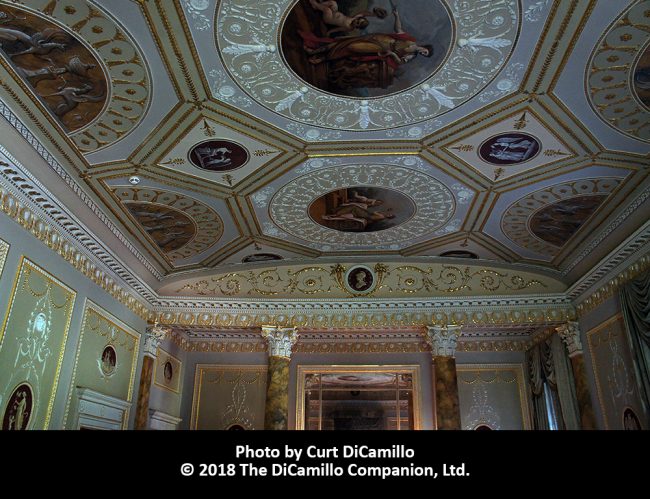
The dining room
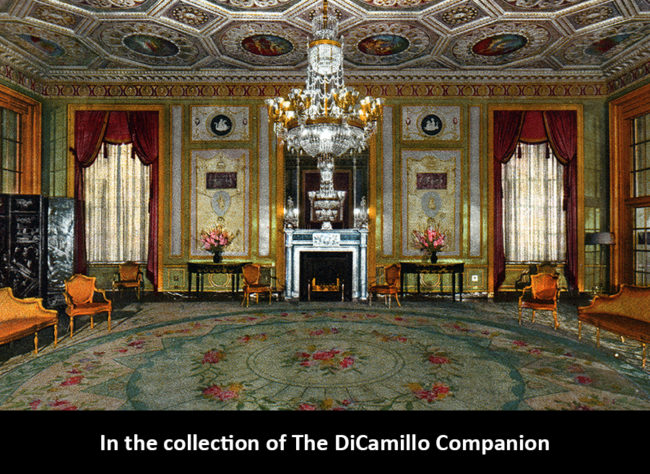
The Basildon Room installed at the Waldorf Astoria Hotel, NYC. From a circa 1935 postcard.
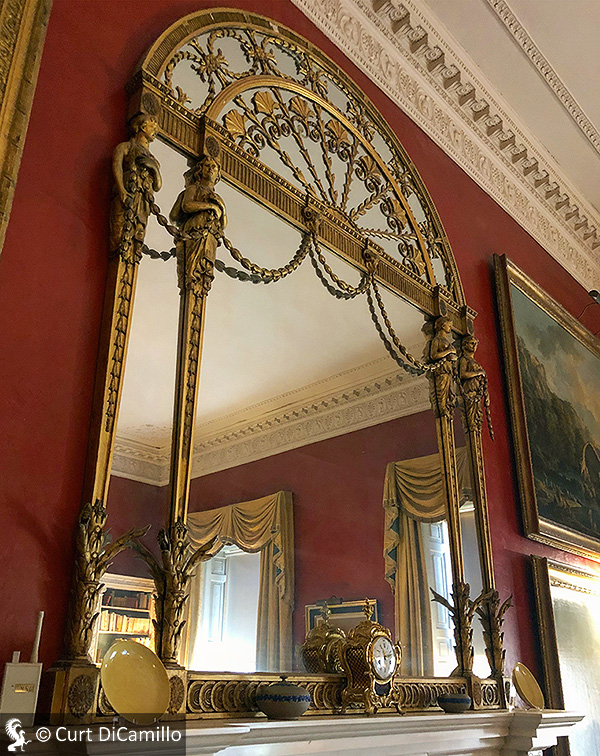
Library overmantel mirror. Maker and date unknown.
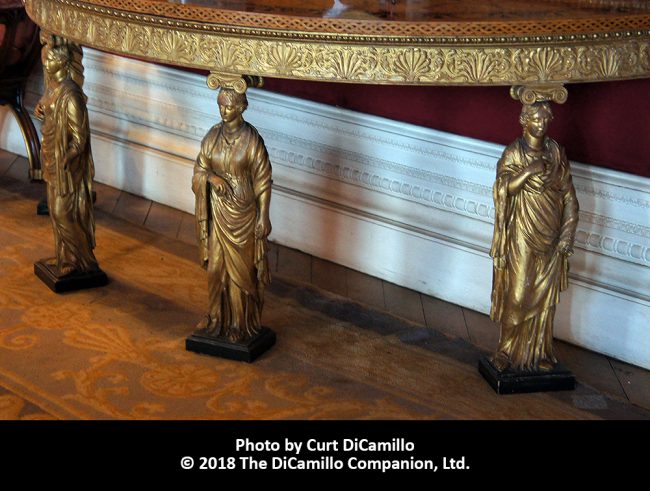
Caryatid pier table from Brockenhurst, today in the octagon room at Basildon Park. This table, one of a pair at Basildon, are probably the earliest known English works of art to reproduce the four caryatid figures from the portico of the Erechtheum on the Acropolis.
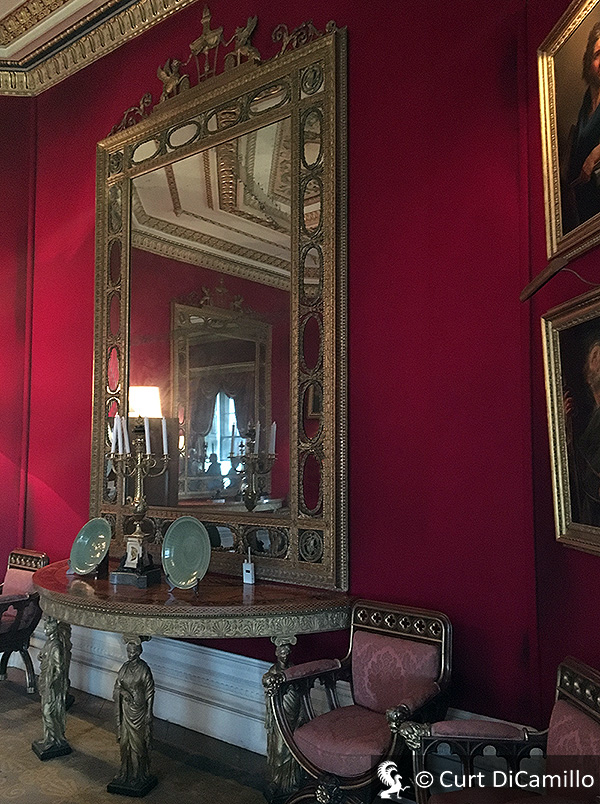
One of two pier glasses in the octagon room. Maker unknown, but made circa 1780 in the style of Robert Adam. These pier glasses hang above the Erechtheum caryatid pier tables.
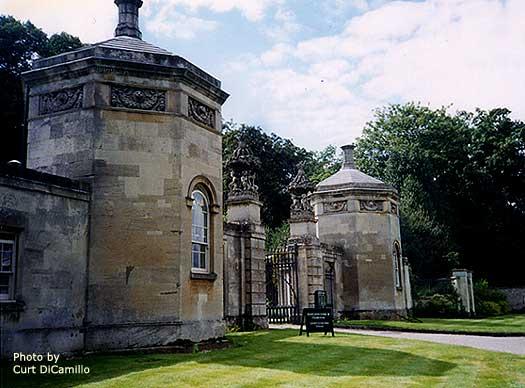
Oxford Lodge (entrance gates), modeled on the 2nd century BC Tower of the Winds, Athens.
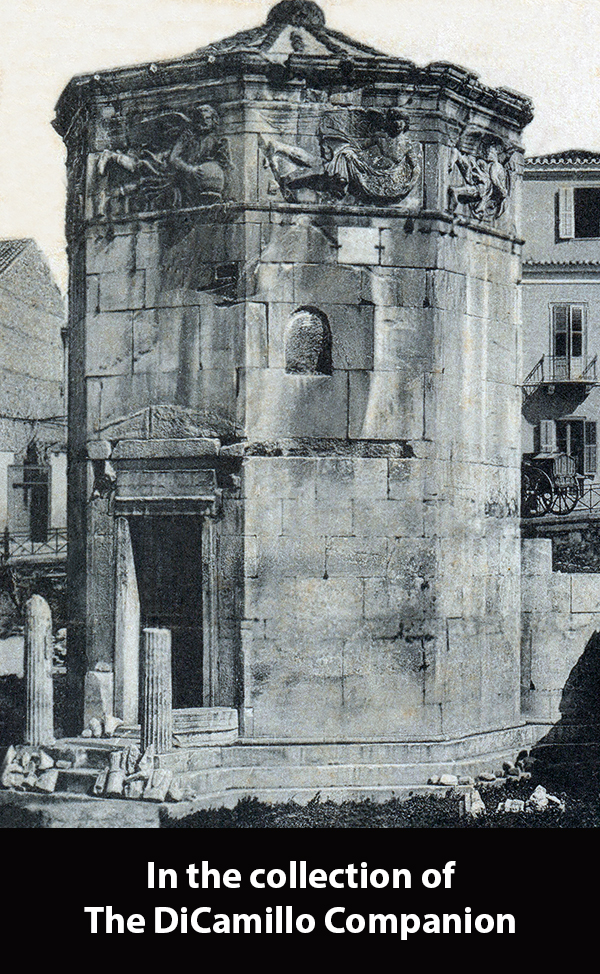
The 2nd century BC Tower of the Winds, Athens, from a 1911 postcard. This very important building was one of the most frequently copied ancient buildings during the Neoclassical period.
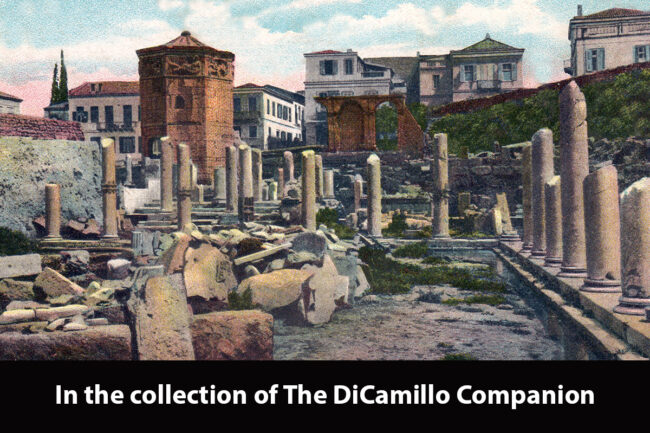
The Tower of the Winds, Athens, from a circa 1905 postcard.
Built / Designed For: Sir Francis Sykes
House & Family History: Basildon Park was begun in 1776 to the designs of John Carr of York, one of the leading architects in northern England. His work was initially influenced by the English Palladians—the Earl of Burlington and William Kent—and later by the Neoclassicism of Robert Adam. At Basildon, Carr's most southerly commission, all these architectural influences were beautifully and successfully incorporated in a building of warm Bath stone. Basildon feature a central block, with a portico in antis, that is joined to two pavilions connected by single-story links—all very Palladian. It's been speculated that the principal facade, the west facade, was inspired by Palladio's Villa Emo (see photo in "Images" section). The interior is notable for its original delicate plasterwork and elegant staircase, as well as the unusual octagon room. The house was saved from dereliction in the mid-20th century by Lord and Lady Iliffe. By the time the Iliffes acquired Basildon some of the interiors had been sold to the Waldorf Astoria Hotel in New York City, where they remain today in the form of the Basildon Room. In 1978 the Iliffes gave the house, together with its park and a large endowment, to the National Trust. The entrance hall features ceilings with stunning Palladian style plasterwork. The dining room sports a fabulous ceiling, gilded and painted in the Neoclassical style with scenes from Dante's "Inferno," which is complemented by late 20th century Neoclassical wall paintings by Alec Cobbe. Another fascinating room is the bamboo bedroom; in this Asian-themed room are a pair of unusual 19th century Chinese medicine dolls. These dolls were used by Chinese nobility when they visited a doctor. Because their status meant they would never undress before a doctor, they would simply point to afflicted areas on the dolls to show the doctor where they hurt! (We are very grateful to Britain Express for much of this history of Basildon.)
Collections: Basildon contains a pair of pier tables (see "Images" section), made circa 1773 by an unknown English craftsman, that are probably the earliest known English works of art to reproduce the caryatid figures from the portico of the Erechtheum on the Acropolis in Athens. The tables were acquired at the Brockenhurst Park sale in 1959 by Lord and Lady Iliffe. Basildon also contains the finest collection in Britain of religious paintings by Pompeo Batoni—a set of eight pictures depicting seven of the Apostles and God the Father. The Iliffes were friends with artist Graham Sutherland, who created the "Christ in Glory" tapestry at Coventry Cathedral. An entire room at Basildon is filled with Sutherland's drawings for the tapestry. A long porcelain cabinet that is today in the collection at Buxted Place, Sussex, originally came from Basildon. Urns today in the dining room at Basildon came from Ham House, London. The curtains in the octagon room were originally installed at Blenheim Palace.
Garden & Outbuildings: The Oxford Lodges (see "Images" section), designed by Carr in the 18th century and modified by J.B. Papworth in 1842, are modeled on the Tower of the Winds in Athens, one of the most frequently copied ancient buildings during the Neoclassical period.
Architect: John Buonarotti Papworth
Date: 1839-42Vitruvius Britannicus: C. New, I, pls. 12-14, 1802.
John Preston (J.P.) Neale, published under the title of Views of the Seats of Noblemen and Gentlemen in England, Wales, Scotland, and Ireland, among other titles: 2.S. Vol. II, 1825.
Country Life: CLXI. 1158, 1227, 1298, 1977.
Title: Buildings of England: Sussex, The
Author: Pevsner, Nikolaus; Nairn, Ian
Year Published: 1973
Reference: pg. 466
Publisher: London: Penguin Books
ISBN: 0140710280
Book Type: Hardback
Title: Basildon Park Guidebook
Author: NA
Year Published: 1995
Reference: pgs. 35
Publisher: London: The National Trust
ISBN: NA
Book Type: Light Softback
Title: Treasure Houses of Britain, The - SOFTBACK
Author: Jackson-Stops, Gervase (Editor)
Year Published: 1985
Reference: pgs. 342-343
Publisher: Washington, DC: National Gallery of Art (New Haven: Yale University Press)
ISBN: 0300035530
Book Type: Softback
House Listed: Grade I
Park Listed: Grade II
Past Seat / Home of: Sir Francis Sykes, 18th century. James Morrison, 18th century. Langton Iliffe, 2nd Baron Iliffe, 20th century.
Current Ownership Type: The National Trust
Primary Current Ownership Use: Visitor Attraction
House Open to Public: Yes
Phone: 01189-843-040
Fax: 01189-767-370
Email: [email protected]
Website: https://www.nationaltrust.org.uk
Historic Houses Member: No